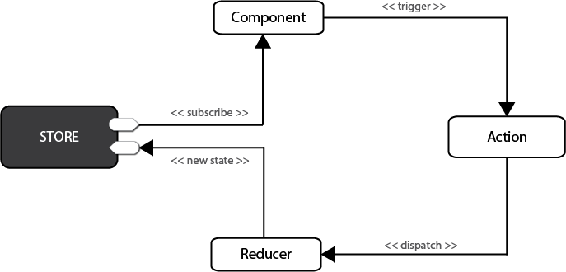React: Tools & Resources
Copyright 2017 SitePoint Pty. Ltd.
- Cover Design: Alex Walker
Notice of Rights
All rights reserved. No part of this book may be reproduced, stored in a retrieval system or transmitted in any form or by any means, without the prior written permission of the publisher, except in the case of brief quotations embodied in critical articles or reviews.
Notice of Liability
The author and publisher have made every effort to ensure the accuracy of the information herein. However, the information contained in this book is sold without warranty, either express or implied. Neither the authors and SitePoint Pty. Ltd., nor its dealers or distributors will be held liable for any damages to be caused either directly or indirectly by the instructions contained in this book, or by the software or hardware products described herein.
Trademark Notice
Rather than indicating every occurrence of a trademarked name as such, this book uses the names only in an editorial fashion and to the benefit of the trademark owner with no intention of infringement of the trademark.

Published by SitePoint Pty. Ltd.
48 Cambridge Street Collingwood
VIC Australia 3066
Web: www.sitepoint.com
Email: books@sitepoint.com
About SitePoint
SitePoint specializes in publishing fun, practical, and easy-to-understand content for web professionals. Visit http://www.sitepoint.com/ to access our blogs, books, newsletters, articles, and community forums. Youll find a stack of information on JavaScript, PHP, design, and more.
Preface
This book is a collection of in-depth guides to some some of the tools and resources most used with React, such as Jest and React Router, as well as a discussion about how React works well with D3, and a look at Preact, a lightweight React alternative. These tutorials were all selected from SitePoint's React Hub.
Who Should Read This Book
This book is for front-end developers with some React experience. If youre a novice, please read Your First Week With React before tackling this book.
Conventions Used
Code Samples
Code in this book is displayed using a fixed-width font, like so:
A Perfect Summer's Day
It was a lovely day for a walk in the park.The birds were singing and the kids were all back at school.
Where existing code is required for context, rather than repeat all of it, will be displayed:
function animate() { new_variable = "Hello";}Some lines of code should be entered on one line, but weve had to wrap them because of page constraints. An indicates a line break that exists for formatting purposes only, and should be ignored:
URL.open("http://www.sitepoint.com/responsive-web-design-real-user-testing/?responsive1");Youll notice that weve used certain layout styles throughout this book to signify different types of information. Look out for the following items.
Tips, Notes, and Warnings
Hey, You!
Tips provide helpful little pointers.
Ahem, Excuse Me ...
Notes are useful asides that are relatedbut not criticalto the topic at hand. Think of them as extra tidbits of information.
Make Sure You Always ...
... pay attention to these important points.
Watch Out!
Warnings highlight any gotchas that are likely to trip you up along the way.
Chapter 1: Getting Started with Redux
by Michael Wanyoike
A typical web application is usually composed of several UI components that share data. Often, multiple components are tasked with the responsibility of displaying different properties of the same object. This object represents state which can change at any time. Keeping state consistent among multiple components can be a nightmare, especially if there are multiple channels being used to update the same object.
Take, for example, a site with a shopping cart. At the top we have a UI component showing the number of items in the cart. We could also have another UI component that displays the total cost of items in the cart. If a user clicks the Add to Cart button, both of these components should update immediately with the correct figures. If the user decides to remove an item from the cart, change quantity, add a protection plan, use a coupon or change shipping location, then the relevant UI components should update to display the correct information. As you can see, a simple shopping cart can quickly become difficult to keep in sync as the scope of its features grows.
In this guide, I'll introduce you to a framework known as Redux, which can help you build complex projects in way that's easy to scale and maintain. To make learning easier, we'll use a simplified shopping cart project to learn how Redux works. You'll need to be at least familiar with the React library, as you'll later need to integrate it with Redux.
Prerequisites
Before we get started, make sure you're familiar with the following topics:
- Functional JavaScript
- Object-oriented JavaScript
- ES6 JavaScript Syntax
Also, ensure you have the following setup on your machine:
- a NodeJS environment
- a Yarn setup (recommended)
You can access the entire code used in this tutorial on GitHub.
What is Redux?
Redux is a popular JavaScript framework that provides a predictable state container for applications. Redux is based on a simplified version of Flux, a framework developed by Facebook. Unlike standard MVC frameworks, where data can flow between UI components and storage in both directions, Redux strictly allows data to flow in one direction only. See the below illustration:

In Redux, all data i.e. state is held in a container known as the store. There can only be one of these within an application. The store is essentially a state tree where states for all objects are kept. Any UI component can access the state of a particular object directly from the store. To change a state from a local or remote component, an action needs to be dispatched. Dispatch in this context means sending actionable information to the store. When a store receives an action, it delegates it to the relevant reducer. A reducer is simply a pure function that looks at the previous state, performs an action and returns a new state. To see all this in action, we need to start coding.
Understand Immutability First
Before we start, I need you to first understand what immutability means in JavaScript. According to the Oxford English Dictionary, immutability means being unchangeable. In programming, we write code that changes the values of variables all the time. This is referred to as mutability. The way we do this can often cause unexpected bugs in our projects. If your code only deals with primitive data types (numbers, strings, booleans), then you don't need to worry. However, if you're working with Arrays and Objects, performing










![Sagar Ganatra [Sagar Ganatra] - React Router Quick Start Guide: Routing in React Applications Made Easy](/uploads/posts/book/119450/thumbs/sagar-ganatra-sagar-ganatra-react-router-quick.jpg)


